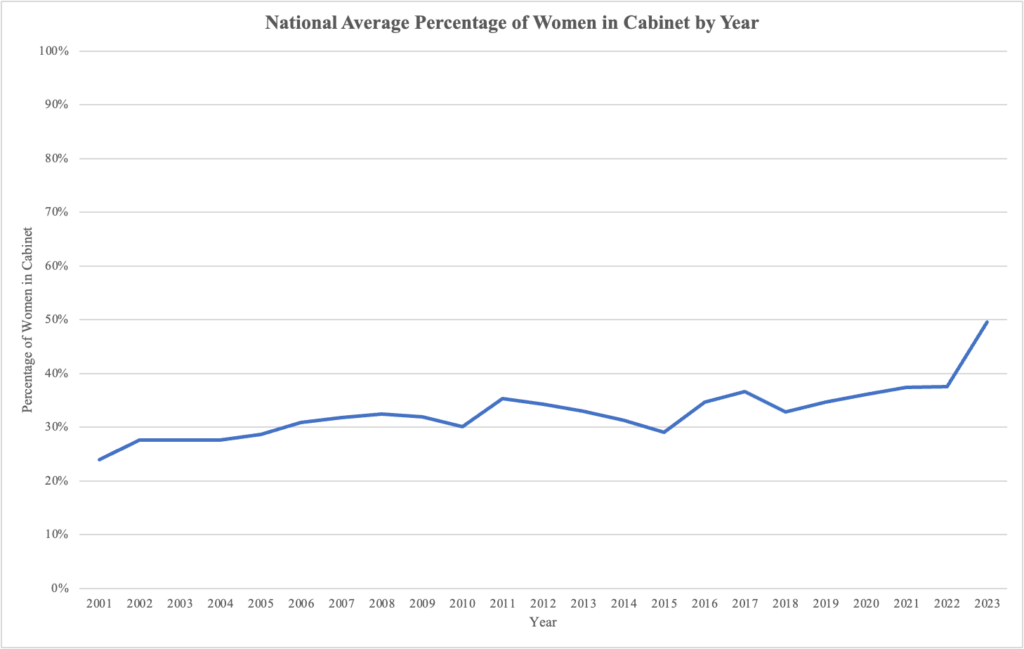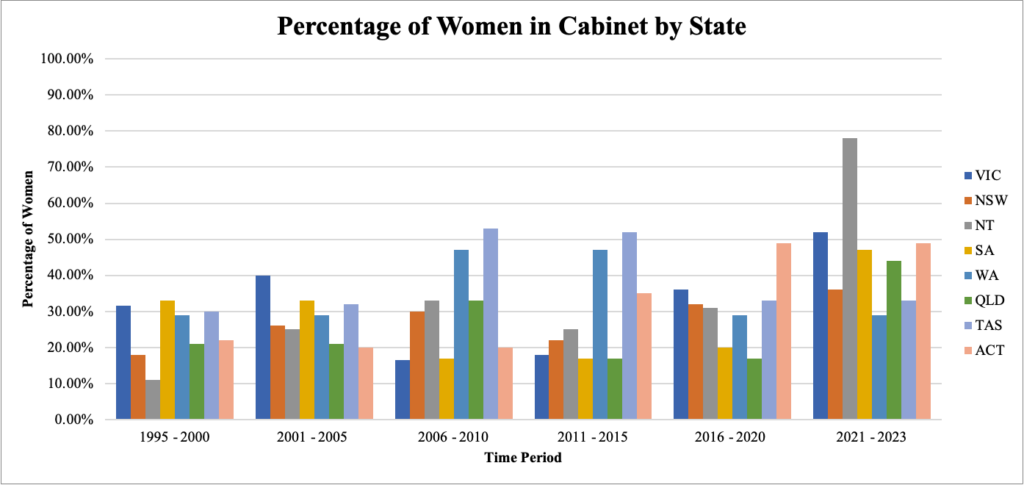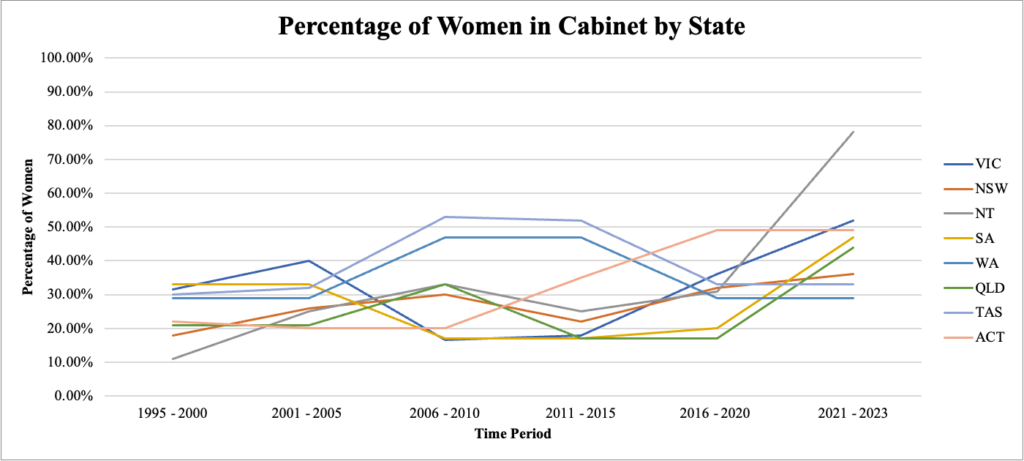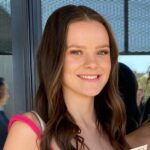Cracking the Cabinet Ceiling: Women’s Representation in state & territory Parliament
In the aftermath of Victorian Premier Daniel Andrews’ departure in September 2023, Jacinta Allan became the second woman to hold the position of Victorian state Premier. However, the unveiling of Premier Allan’s cabinet on October 2 passed with minimal fanfare. Yet, a significant shift became apparent – out of the 22 captured ministers, only 7 were men. This observation prompted the Victorian Women’s Trust to undertake a comprehensive review of women’s senior representation in cabinets across the nation.
This research inquiry serves as a reflection on the long journey that has shaped the landscape of women’s participation in the upper echelons of government. Remarkably, despite the hurdles, the representation of women in senior political roles is now firmly woven into the fabric of our political milieu. A significant achievement, realised after one hundred and twenty-three years of progress.
Key Observations of Women in State and Territory Cabinets
Victoria
The representation of women in Victoria’s cabinets has changed remarkably over the past twenty-five years. The percentage of women was low under premier Kennett’s two terms. However, under the leadership of Daniel Andrews, the percentage of women in cabinet increased significantly, reaching 36% and later 52%. In 2023, Jacinta Allen’s cabinet achieved a notable 65% female representation.
New South Wales
New South Wales has maintained relatively stable, though modest, levels of female representation in its cabinets. From 1995 to 2022, the average percentage of women in the cabinet was approximately 24%. Nevertheless, Chris Minns’ cabinet in 2023 marked a substantial improvement with 48% female representation.
The Northern Territory
The Northern Territory’s cabinets have experienced fluctuations in the representation of women, ranging from 11% to 78%. Notably, Michael Gunner and Natasha Fyles’ cabinets stood out with 57% and 78% female representation, respectively, representing the most significant representation of women in the country.
South Australia
South Australia has seen varying percentages of women in cabinet, with Mike Rann’s leadership reaching a notable 42% female representation in 2002. Currently, incumbent Peter Malinauskas’ cabinet stands at 47% female representation.
Western Australia
Western Australia has witnessed fluctuations in the representation of women in cabinet, with the highest percentage reaching 47% under Alan Carpenter’s leadership in 2006. However, Western Australia currently stands out with one of the lowest levels of female representation in cabinet, at 35%.
Queensland
Queensland’s representation of women in cabinets remained relatively low from 1998 to 2015. However, incumbent Annastacia Palaszczuk’s tenure demonstrated a significant improvement, achieving 44% female representation.
Tasmania
Tasmania has observed notable shifts in the representation of women in cabinet, with Lara Giddings’ leadership marking a high of 70% in 2011. Although there have been fluctuations, the representation of women in cabinets remained higher than in some other states. Currently, Jeremy Rockliff’s cabinet has the lowest representation of women at 25% in 2023.
Australian Capital Territory
In the Australian Capital Territory, there have been varying percentages of women in cabinets, with Katy Gallagher’s tenure reaching 50%. The data reflects a noticeable increase in female representation over the years, with the incumbent Andrew Barr’s cabinet comprising 55% women in 2020.
Gender Composition of State Cabinets
Note: Percentages are rounded to the nearest whole percentage
| Victoria | Raw Numbers | Percentage |
| Jeff Kennett, LIB, 1992-1999 | 23, 3 women, 20 men (1992)
16, 3 women, 13 men (1996) |
13% (1992)
19% (1996) |
| Steve Bracks, ALP, 1999-2007 | 18, 8 women, 10 men (1999)
20, 8 women, 12 men (2002) |
44% (1999)
40% (2002) |
| John Mansfield Brumby, ALP, 2007-2010 | 21, 5 women, 16 men (2009) | 24% (2009) |
| Edward (Ted) Norman Baillieu, LNP, 2010-2013 | 22, 2 women, 20 men (2013) | 9% |
| Denis Vincent Napthine, LNP, 2013-2014 | 22, 4 women, 18 men (2014) | 18% (2014) |
| Daniel Michael Andrews, ALP, 2014-2023 | 22, 8 women, 14 men (2014)
23, 12 women, 11 men (2022) |
36% (2014)
52% (2022) |
| Jacinta Marie Allan, ALP, 2023 (incumbent) | 23, 15 women, 8 men (2023) | 65% (2023) |
| New South Wales | Raw Numbers | Percentage |
| Robert (Bob) Carr, ALP, 1995-2005 | 21, 3 women, 17 men (1995)
22, 3 women, 18 men (1999) |
14% (1995)
14% (1999) |
| Morris Iemma, ALP, 2005-2008 | 18, 4 women, 14 men (2005) | 22% (2005) |
| Nathan Rees, ALP, 2008-2009 | 23, 7 women, 16 men | 30% |
| Kristina Keneally 2009-2011, ALP | 23, 7 women, 16 men (2009) | 30% (2009) |
| Barry O’Farrell, LIB, 2011-2014 | 23, 5 women, 18 men (2011) | 22% (2011) |
| Mike Baird, LIB, 2014-2017 | 23, 6 women, 17 men (2014)
22, 4 women, 18 men (2015) |
26% (2014)
18% (2015) |
| Gladys Bereiiklian, LNP, 2017-2021 | 24, 6 women, 18 men (2017)
23, 9 women, 14 men (2019) |
25% (2017)
39% (2019) |
| Dominic Perrottet, LNP, 2021-2023 | 21, 5 women, 16 men (2022) | 24% (2022) |
| Chris Minns, ALP, 2023 (incumbent) | 23, 11 women, 12 men (2023) | 48% (2023) |
| Northern Territory | Raw Numbers | Percentage |
| Denis Burke, LCP, 1991-2001 | 9, 1 woman, 8 men (2000) | 11% (2000) |
| Clare Martin, ALP, 2001-2007 | 8, 2 women, 6 men (2002)
9, 3 women, 6 men (2007) |
25% (2002)
33% (2007) |
| Paul Henderson, ALP, 2007-2012 | 8, 2 women, 6 men (2012) | 25% (2012) |
| Terry Mills, LCP, 2012-2013 | 9, 2 women, 7 men (2013) | 22% (2013) |
| Adam Giles, LCP, 2013-2016 | 8, 1 woman, 7 men (2015) | 13% (2015) |
| Michael Gunner, ALP, 2016-2022 | 8, 4 women, 3 men (2016) | 57% (2016) |
| Natasha Fyles, ALP, 2022 (incumbent) | 9, 7 women, 2 men (2023) | 78% (2023) |
| South Australia | Raw Numbers | Percentage |
| Rob Kerin, ALP, 2001-2002 | 13, 3 women, 10 men (2001) | 23% (2001) |
| Mike Rann, ALP, 2002-2011 | 12, 5 women, 7 men (2002)
15, 3 women, 12 men (2011) |
42% (2002)
20% (2011) |
| Jay Weatherill, ALP, 2011-2018 | 13, 4 women, 19 men (2013) | 31% (2013) |
| Steve Marshall, LIB, 2018-2022 | 15, 3 women, 13 men (2018) | 20% (2018) |
| Peter Malinauskas, ALP, 2022 (incumbent) | 17, 8 women, 9 men (2023) | 47% (2023) |
| Western Australia | Raw Numbers | Percentage |
| Geoff Gallop, ALP, 2001-2006 | 14, 4 women, 10 men (2001) | 29% (2001) |
| Alan Carpenter, ALP, 2006-2008 | 17, 8 women, 9 men (2006) | 47% (2006) |
| Colin Barnett, LIB, 2008-2017 | 22, 5 women, 17 men (2017) | 23% (2017) |
| Mark McGowan, ALP, 2017-2023 | 18, 6 women, 12 men (2017)
19, 5 women, 14 men (2021) |
33% (2017)
26% (2021) |
| Roger Cook, ALP, 2023 (incumbent) | 17, 6 women, 11 men (2023) | 35% (2023) |
| Queensland | Raw Numbers | Percentage |
| Peter Beattie, ALP, 1998-2007 | 19, 4 women, 15 men (1998) | 21% (1998) |
| Anna Bligh, ALP, 2007-2012 | 18, 6 women, 12 men (2009)
19, 7 women, 12 men (2011) |
33% (2009) |
| Campbell Newman, LNP, 2012-2015 | 19, 3 women, 16 men (2012) | 16% (2012) |
| Annastacia Palaszcuk, ALP, 2015 (incumbent) | 18, 8 women, 10 men (2023) | 44% (2023) |
| Tasmania | Raw Numbers | Percentage |
| Jim Bacon, ALP, 1998-2004 | 10, 3 women, 7 men (2000) | 30% (2000) |
| Paul Lennon, ALP, 2004-2008 | 11, 3 women, 8 men (2008) | 27% (2008) |
| David Barlett, ALP, 2008-2011 | 11, 4 women, 7 men (2008) | 36% (2008) |
| Lara Giddings, ALP, 2011-2014 | 10, 7 women, 3 men (2011) | 70% (2011) |
| Will Hodgman, LIB, 2014-2020 | 9, 3 women, 6 men (2018) | 33% (2018) |
| Peter Gutwein, LIB, 2020-2022 | 10, 5 women, 5 men (2021) | 50% (2021) |
| Jeremy Rockliff, LIB, 2022 (incumbent) | 8, 2 women, 6 men (2023) | 25% (2023) |
Australian Capital Territory
| Kate Carnell, LIB, 1995 – 2000 | 4, 1 women, 3 men (1995)
5, 1 women, 4 men (1999) |
25% (1995)
20% (1999) |
| Gary Humphries, LIB 2000 – 2001 | 5, 1 women, 4 men (2000) | 20% (2000) |
| Jon Stanhope, ALP, 2001 – 2011 | 5, 1 women, 4 men (2002)
5, 1 women, 4 men (2007) |
20% (2002)
20% (2007) |
| Katy Gallagher, ALP, 2011 – 2014 | 4, 2 women, 2 men (2011) | 50% (2011) |
| Andrew Barr, ALP, 2014 – Incumbent | 5, 1 woman, 4 men (2014)
7, 3 women, 4 men (2017) 9, 5 women, 4 men (2020) |
20% (2014)
43% (2017) 55% (2020) |
Percentage of Women in State and Territory Cabinets Nationally
Note: Percentages are rounded to the nearest whole percentage











This research underscores the dynamic nature of women’s representation in Australian state and territory cabinets. The findings reveal a spectrum of progress and challenges, with some jurisdictions achieving commendable strides in recent years. Jacinta Allen’s cabinet in Victoria and Natasha Fyles’ cabinet in the Northern Territory stand out as notable examples of breaking gender barriers, achieving 65% and 78% female representation, respectively.
Conversely Tasmania, despite witnessing significant strides during Lara Giddings’ leadership, currently faces a dip in women’s representation under Jeremy Rockliff’s cabinet, standing at 25%. This variation among jurisdictions underscores the importance of sustained efforts to address gender disparities and foster inclusive political landscapes nationwide.
Since this research was conducted, the Victorian government announced that it had reached parity for the first time — more than 55% of Victorian Labor MPs were women and the majority of ministers in Allan’s cabinet are also female. Leader of the Victorian Greens, Samantha Ratman MP, said of the achievement:
“We need to increase the diversity across all parliaments so people from all parts of our community are given a seat at the table. We want to see migrant women, we want to see trans women, we want to see working-class women and we want to see women of diverse faiths in parliament’s chambers having their voices heard.”
As Australia navigates its political landscape, the data presented here serves as a critical resource for policymakers, researchers, and advocates committed to advancing gender equity in political leadership. By understanding the historical context and contemporary trends, we can collectively work towards building a more representative and inclusive future for women in Australian politics.
 Bianca Kendrick is a Master of Public Policy and Management candidate and Bachelor of Arts Graduate (Politics and International Studies and Criminology) at the University of Melbourne. Passionate about social justice and evidenced-based policy, Bianca has worked with the Victorian Women’s Trust on a number of key projects including civic engagement referendum campaign, Together Yes.
Bianca Kendrick is a Master of Public Policy and Management candidate and Bachelor of Arts Graduate (Politics and International Studies and Criminology) at the University of Melbourne. Passionate about social justice and evidenced-based policy, Bianca has worked with the Victorian Women’s Trust on a number of key projects including civic engagement referendum campaign, Together Yes.